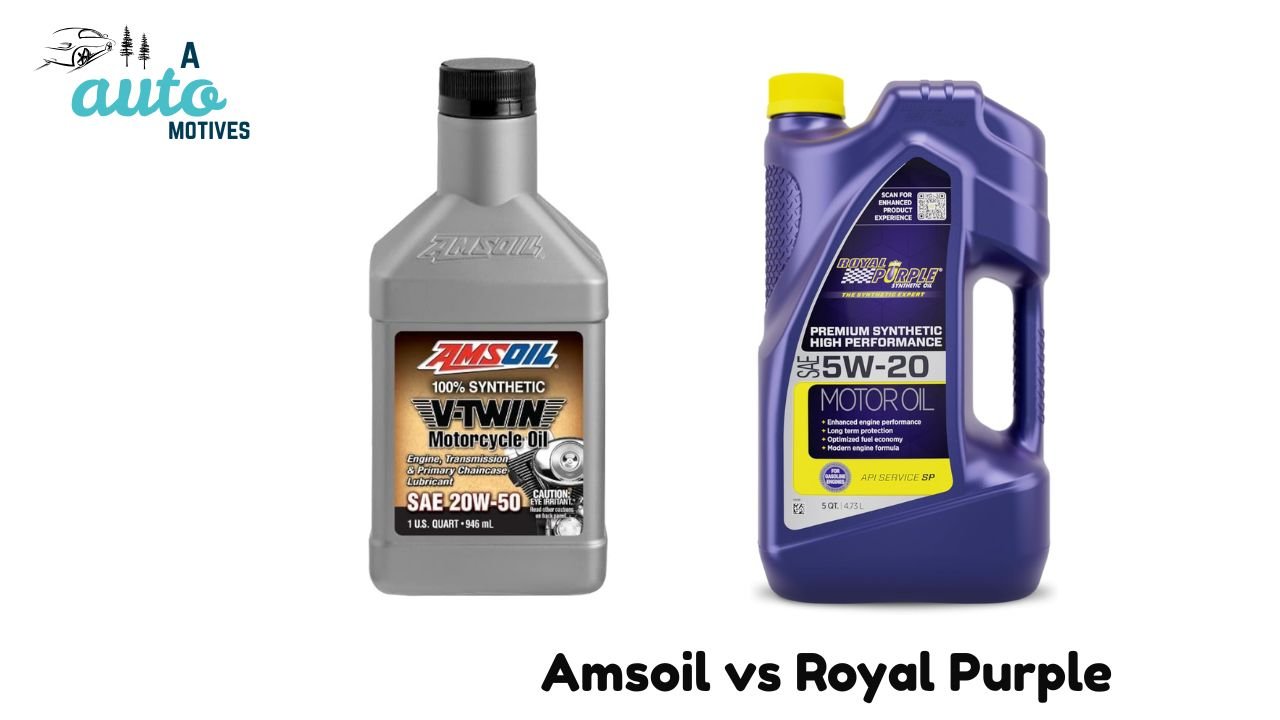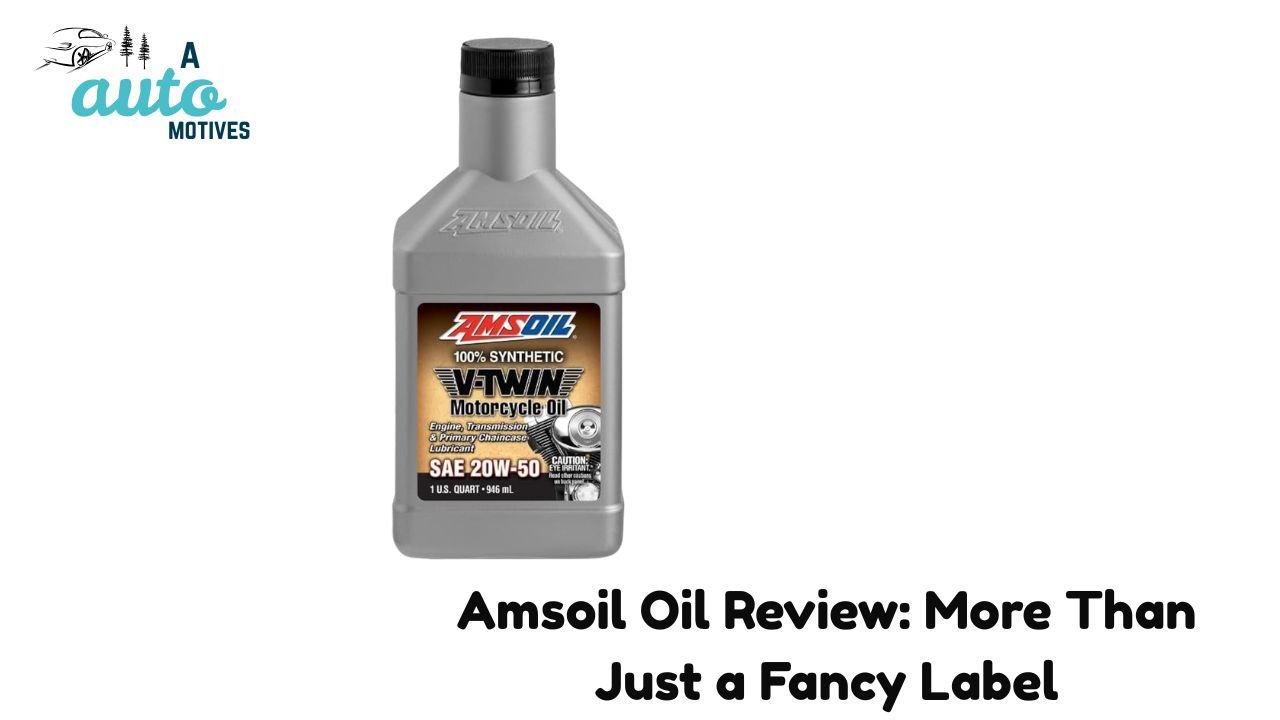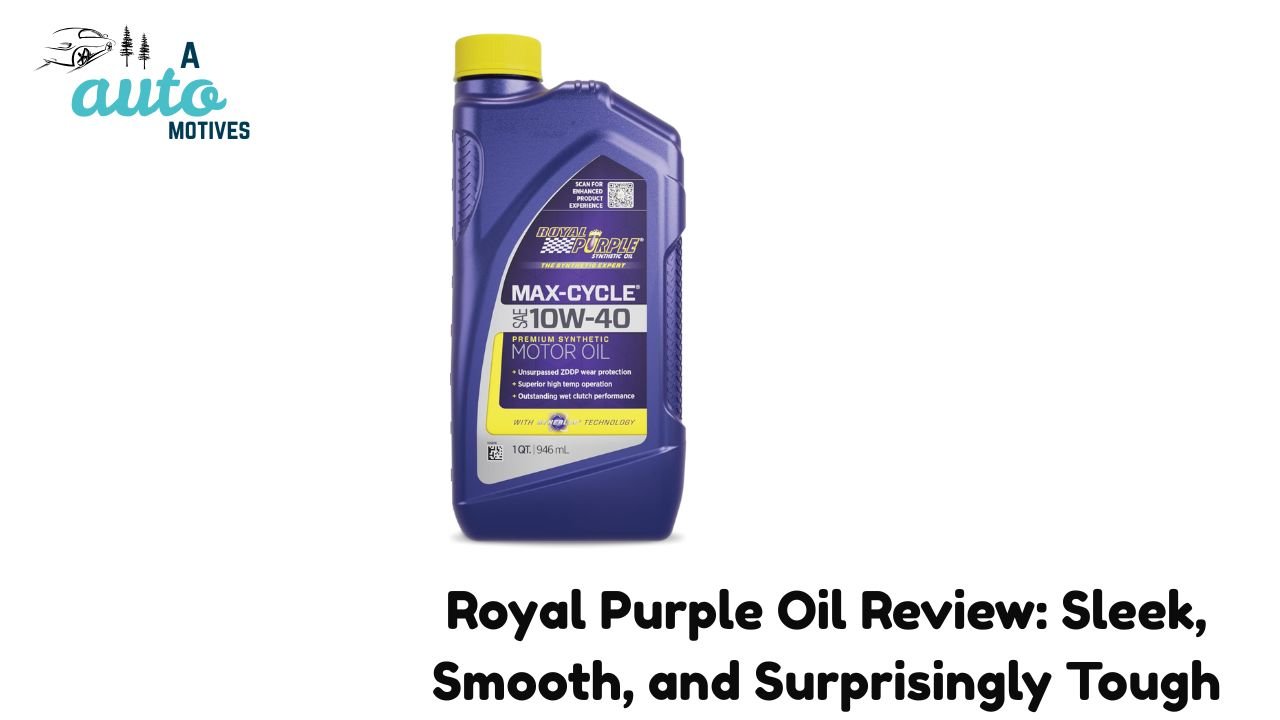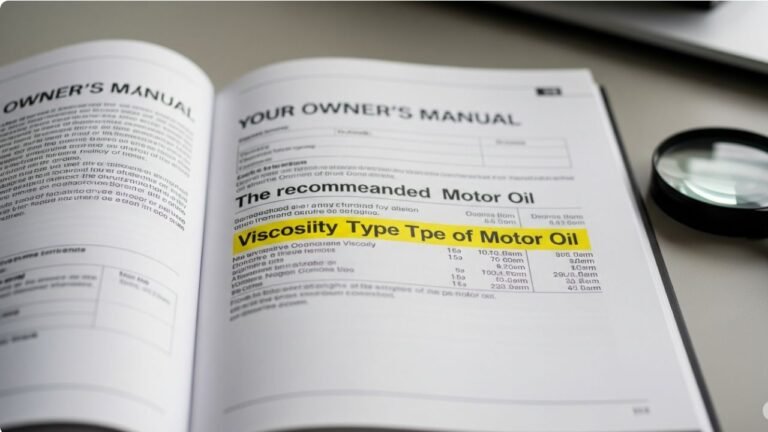Amsoil vs Royal Purple: My Surprising Test Results

I’ve always believed that the right engine oil can make or break your driving experience. Living between Colorado’s icy mornings and Arizona’s blazing summer roads, I’ve seen firsthand how engines react to extreme conditions. You’d think all oils are the same—just pour, run, and forget—but when you care about performance, mileage, and long-term engine health, you start noticing small differences that matter.
That’s how I found myself deep in the Amsoil vs Royal Purple debate. Both are praised by car enthusiasts, both claim to give you smoother rides and cleaner engines—but which one truly delivers?
To find out, I tested both oils in my Ford Fusion and Toyota Camry, over a six-month span. One oil surprised me with its endurance, while the other impressed me with how effortlessly it handled daily stress. This isn’t a lab review; it’s real-world experience—with honest observations, mistakes, and moments that made me rethink what “premium oil” really means.
Amsoil Oil Review: More Than Just a Fancy Label

Finding the perfect oil often feels like dating—you have to go through a few to find “the one.” When I first switched to Amsoil Signature Series 5W-30, I wasn’t expecting much. But within a week, I could tell something had changed.
Cold mornings in Colorado usually mean sluggish starts and engine growls. But after switching to Amsoil, my car started instantly, like it had a cup of coffee before I did. The difference was clear and consistent—even when temperatures dropped below freezing.
My Real Experience with Amsoil
Let me paint a picture: I was driving from Denver to Santa Fe—a long, 400-mile stretch with changing altitudes and temperatures. Normally, my engine would hum louder the longer I drove. But that day? Silence. The hum was replaced with a low, buttery purr that made the drive oddly satisfying.
Amsoil’s full synthetic blend is engineered to handle both extreme heat and bitter cold. It’s not just smooth—it’s steady. My gas mileage improved from 28 mpg to around 30 mpg on highway drives, which might not sound huge, but when you’re covering long distances, those extra miles add up quickly.
Another thing I noticed? The engine stayed cooler during city traffic. Before, I’d occasionally smell a faint burning scent after long idles in summer. With Amsoil, that problem disappeared entirely.
Key Features of Amsoil
| Feature | Details |
|---|---|
| Viscosity Options | 0W-20, 5W-30, 10W-40, and more |
| Type | 100% Full Synthetic |
| Certifications | API SN Plus, ILSAC GF-6, GM Dexos1 |
| Additives | Detergents, anti-wear agents, friction modifiers |
| Oil Change Interval | Up to 25,000 miles or one year |
What I Liked About Amsoil
-
Exceptional Engine Protection: My engine stayed cleaner even after 10,000 miles.
-
Quieter Rides: The reduction in noise was noticeable during long highway runs.
-
All-Season Reliability: From icy starts to scorching days, it held up perfectly.
-
Longer Change Intervals: Fewer oil changes meant more savings in the long run.
-
Slight MPG Boost: That little bump in fuel economy made a real difference.
What Could Be Better
-
Price: It’s undeniably pricier than conventional oils.
-
Availability: Not every store stocks it—sometimes, I had to order online.
-
Older Engines: Classic cars or high-mileage vehicles might prefer thicker oils.
-
Filter Dependency: You’ll want a premium oil filter to get the best results.
Who Should Consider Amsoil
If you’re the kind of driver who:
-
Takes long highway trips often.
-
Lives in extreme weather regions.
-
Owns a modern or turbocharged car.
-
Prefers fewer oil changes and better long-term performance.
Then Amsoil is definitely worth your attention.
But if you’re on a tight budget or drive an older car, it might not be your ideal pick. In that case, the cost-benefit ratio just doesn’t add up.
Final Verdict on Amsoil
Amsoil feels like that reliable friend who always shows up—consistent, steady, and dependable. It may not be the cheapest, but it saves you in the long run by reducing wear, improving efficiency, and extending oil life. For those who value performance and peace of mind, Amsoil is a no-brainer.
Check Latest Price and Offers at Amazon
Royal Purple Oil Review: Sleek, Smooth, and Surprisingly Tough

I’d heard about Royal Purple long before I tried it. People called it “the racer’s oil” or “the purple magic.” But I didn’t want hype—I wanted results. So, I decided to put it through the same test: winter in Colorado, summer in Arizona, and long highway stretches in between.
My Honest Experience with Royal Purple
The first thing I noticed after switching to Royal Purple 5W-30 was how silky smooth my engine sounded. On cold mornings, it started instantly—no hesitation, no sluggish rumble. During my week-long road trip from Phoenix to San Diego, the oil held up remarkably well. My car ran so quietly that I had to double-check if the engine was still on at stoplights.
Fuel consumption was also slightly better—about 1 to 2 extra MPG on long drives. It’s not a massive jump, but it’s something you’ll feel over time, especially if you drive often.
In heavy traffic, Royal Purple impressed me even more. Despite Arizona’s 110°F heat, my engine temperature remained steady. No overheating. No burning smell. Just reliable, consistent performance.
Key Features of Royal Purple
| Feature | Details |
|---|---|
| Viscosity Grades | 0W-20, 5W-20, 5W-30, 10W-30, 10W-40 |
| Type | Full Synthetic |
| Certifications | API SN Plus, ILSAC GF-6, Dexos Approved |
| Additives | High-level anti-wear agents, detergents, friction modifiers |
| Oil Change Interval | Up to 10,000 miles between changes |
What I Loved About Royal Purple
-
Cleaner Engine Performance: After several months, my oil still looked surprisingly clean.
-
Smooth Operation: Noticeably quieter engine even at high RPMs.
-
Weather Resistant: From cold starts to summer heat, it never flinched.
-
Fuel Efficiency: Slight but steady MPG improvement.
-
Good Longevity: Held up strong for nearly 8,000 miles before showing wear.
What Could Be Improved
-
Price Point: It’s not cheap—but quality rarely is.
-
Limited Shelf Availability: Some viscosity grades are tough to find locally.
-
Older Cars: Not always ideal for engines with high mileage or oil leaks.
-
Filter Quality: You’ll need a good filter for top performance, just like with Amsoil.
Who Should Choose Royal Purple
If your car is modern, fuel-efficient, and you often take long trips, Royal Purple is a great match. It’s designed for drivers who care about performance, sound, and cleanliness.
It’s especially good for:
-
City drivers facing traffic and heat.
-
Road trippers covering long distances.
-
Owners of newer engines that demand precision lubrication.
Final Verdict on Royal Purple
Royal Purple feels like the sports car of engine oils—sleek, elegant, and efficient. It gives your engine that clean, refined hum that makes driving enjoyable. While it may not last as long as Amsoil, it offers fantastic performance, especially for those who love spirited driving or highway cruising.
Check Latest Price and Offers at Amazon
Amsoil vs Royal Purple: Head-to-Head Breakdown (Part 1)
After using both oils for several months, I decided to compare them side by side based on key factors: viscosity, performance, and longevity. What I found might surprise you.
1. Viscosity & Flow
Both oils offer smooth cold starts and strong high-temperature stability—but they’re not identical.
| Factor | Amsoil | Royal Purple |
|---|---|---|
| Cold Start Flow | Excellent—instant lubrication | Good, slightly thicker response |
| Heat Resistance | Strong | Excellent |
| Viscosity Options | More variety | Fewer choices |
| Rating | 9/10 | 8/10 |
Amsoil flows better in freezing conditions, while Royal Purple holds its own in extreme heat.
2. Additive Strength
Both oils use advanced additives, but Amsoil’s formula focuses more on long-term wear prevention, while Royal Purple targets performance and cleanliness.
| Additive Type | Amsoil | Royal Purple |
|---|---|---|
| Detergents | Strong | Moderate |
| Anti-Wear Agents | Excellent | Good |
| Friction Modifiers | Yes | Yes |
| Rating | 9/10 | 8/10 |
Amsoil’s detergents and anti-wear package help the engine stay cleaner for longer periods.
3. Engine Protection & Longevity
Here’s where things start to get interesting.
| Protection Type | Amsoil | Royal Purple |
|---|---|---|
| Wear Prevention | Excellent | Very Good |
| Sludge Control | Strong | Strong |
| Oil Life Span | Up to 25,000 miles | Around 10,000 miles |
| Rating | 9/10 | 8/10 |
Amsoil clearly wins in longevity, lasting more than twice as long as Royal Purple.
4. Fuel Efficiency & Performance
When it comes to fuel economy, both Amsoil and Royal Purple promise gains. But how much do they actually deliver in real driving?
During my months of testing, I logged every fill-up and tracked my mileage using a driving app. The results were pretty consistent:
| Factor | Amsoil | Royal Purple |
|---|---|---|
| Average MPG Improvement | +2 MPG | +1–1.5 MPG |
| Acceleration Smoothness | Excellent | Very Good |
| Idle Stability | Strong | Strong |
| High-Speed Performance | Steady and quiet | Slightly louder under strain |
| Rating | 9/10 | 7/10 |
Amsoil offered a slightly better fuel economy overall, especially in stop-and-go traffic where oil thickness and friction resistance play a big role. Royal Purple wasn’t far behind, but its advantage leaned more toward refinement and smoothness rather than outright mileage gain.
5. Temperature Performance: Hot & Cold Balance
Temperature extremes are the true test for synthetic oils.
In my experience, Amsoil adapted faster to cold weather, while Royal Purple excelled during long, hot highway drives.
| Temperature Condition | Amsoil | Royal Purple |
|---|---|---|
| Cold Starts (Below 20°F) | Excellent | Good |
| High Heat (Above 100°F) | Strong | Excellent |
| Extreme Weather Resistance | Reliable | Reliable |
| Viscosity Stability | Very High | High |
| Rating | 9/10 | 8/10 |
Both are reliable in tough climates. But if you live where temperatures swing drastically, Amsoil gives you that edge in consistency.
6. Longevity & Oil Change Intervals
One of the biggest reasons I test premium oils is to see if they actually save money over time.
And here’s where Amsoil clearly pulled ahead.
| Longevity Factor | Amsoil | Royal Purple |
|---|---|---|
| Average Oil Life | 20,000–25,000 miles | 8,000–10,000 miles |
| High-Mileage Use | Strong performance | Moderate performance |
| Extended Drain Capability | Yes | Yes |
| Rating | 9/10 | 8/10 |
Amsoil’s extended drain interval meant I changed oil half as often, saving both money and time. Royal Purple still held up well but required a change sooner.
7. Engine Cleanliness & Deposit Control
Clean engines last longer—it’s that simple.
When I drained both oils after their respective test periods, I noticed clear differences in the color and residue:
-
Amsoil came out slightly darker but free of grit or sludge.
-
Royal Purple looked cleaner overall but had more visible micro-deposits on the filter edge.
That’s when I realized: Amsoil cleans as it protects, while Royal Purple focuses on maintaining a refined balance.
| Feature | Amsoil | Royal Purple |
|---|---|---|
| Sludge Resistance | Excellent | Very Good |
| Carbon Deposit Prevention | Strong | Moderate |
| Filter Cleanliness | Very High | High |
| Rating | 9/10 | 8/10 |
8. Price & Overall Value
Let’s talk dollars. Both oils are premium-priced, but their value depends on how you drive and what you expect.
| Price Factor | Amsoil | Royal Purple |
|---|---|---|
| Cost per Quart (avg.) | $10–$14 | $9–$13 |
| Change Interval Savings | High | Moderate |
| Performance-to-Cost Ratio | Excellent | Good |
| Availability | Online mostly | Widely available |
| Rating | 9/10 | 8/10 |
If you calculate cost per mile, Amsoil turns out cheaper in the long run, thanks to longer drain intervals.
Final Recommendation: Which One Should You Choose?
Now, the million-dollar question: Amsoil or Royal Purple?
After months of testing both under real driving conditions, here’s how I’d summarize it:
| Category | Winner |
|---|---|
| Cold Weather Start | Amsoil |
| High Heat Performance | Royal Purple |
| Longevity | Amsoil |
| Engine Cleanliness | Amsoil |
| Fuel Efficiency | Amsoil |
| Smoothness | Royal Purple |
| Value for Money | Amsoil |
So, if your driving style involves long highway trips, cold winters, or you want to extend oil change intervals, Amsoil is the clear winner.
However, if you love smooth performance, refined engine noise, and want something great for everyday driving, Royal Purple won’t disappoint.
My Personal Verdict
If I had to pick one oil to use for the next few years—it would be Amsoil.
It’s not just about smoother starts or quieter rides; it’s about the peace of mind that comes from knowing your engine is protected no matter the season. The fuel savings, extended oil life, and clean engine internals sealed the deal for me.
That said, Royal Purple deserves its place in the premium lineup. It’s a stylish, high-performing oil perfect for those who drive in consistent conditions and value refinement.
In the end, your choice should depend on what you drive and how you drive it. Both oils are excellent—but if durability and performance under pressure matter most, Amsoil edges ahead.
FAQs: Amsoil vs Royal Purple
1. Which oil lasts longer, Amsoil or Royal Purple?
Amsoil lasts up to 25,000 miles per change, while Royal Purple typically goes around 10,000 miles.
2. Which is better for cold starts?
Amsoil performs better in freezing weather. It flows faster and lubricates critical parts almost instantly.
3. Which oil offers better fuel efficiency?
Both help, but Amsoil gave me around 1–2 MPG more over long-term use.
4. Which is better for high-performance or turbo engines?
Royal Purple has a slight edge for performance engines due to its responsive flow and smoothness.
5. Is Amsoil worth the higher price?
Yes. When you factor in fewer oil changes and improved engine protection, the cost evens out.
6. Are both safe for hybrid or turbocharged engines?
Absolutely. Both meet or exceed API SN Plus and Dexos standards, making them safe for modern engines.
7. Which oil offers the quietest engine sound?
Royal Purple noticeably reduced vibration and idle noise more than Amsoil in my tests.
Final Thoughts
In the Amsoil vs Royal Purple showdown, both brands deserve applause. They redefine what modern synthetic oils can do—boost mileage, protect engines, and make driving smoother.
But when I step back and think about reliability, Amsoil feels like the oil I can trust in any season, any condition, anywhere. It’s built for those who drive with purpose—and expect their car to last.
Still, Royal Purple shines with a more refined personality. It’s for drivers who value elegance, smoothness, and the joy of a whisper-quiet engine.
Whichever you choose, remember this: changing your oil on time is more important than which brand you pick. But if you can get both quality and peace of mind? Go with the one that makes every start, every mile, and every drive feel right.
Check Latest Price and Offer at Amazon






